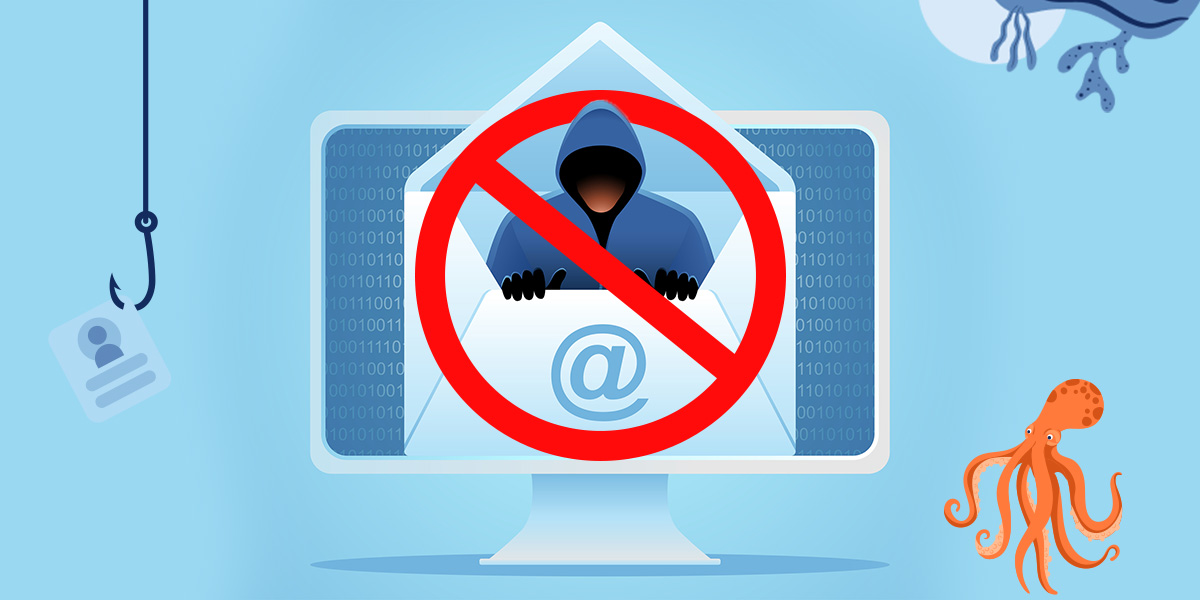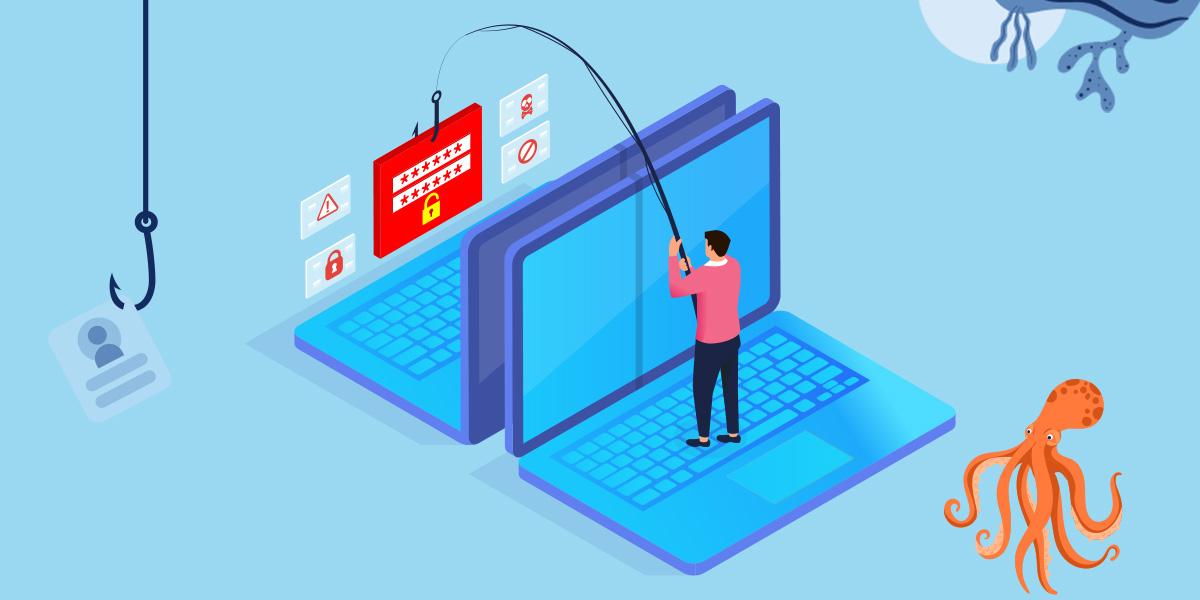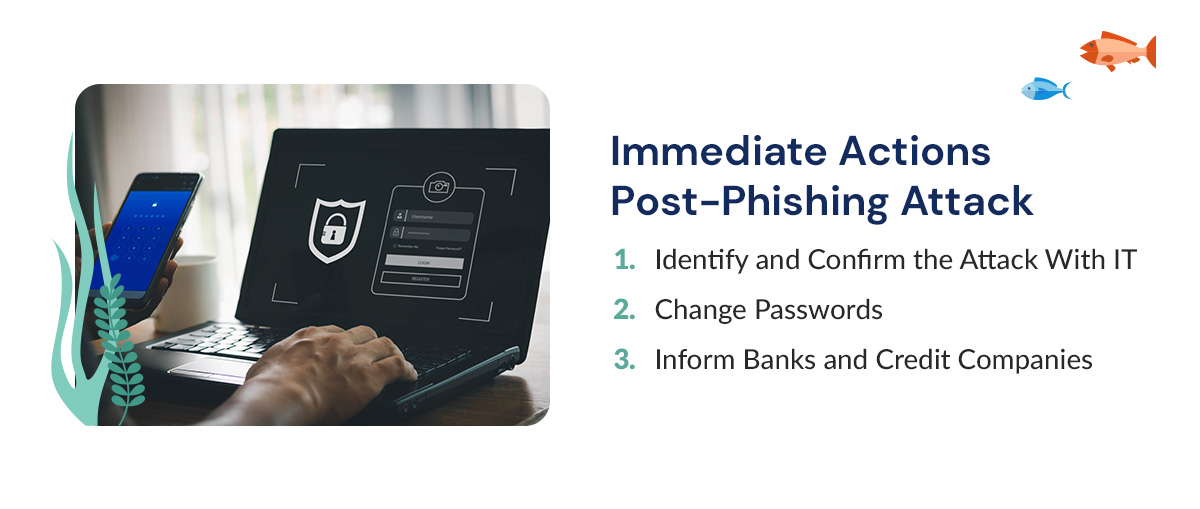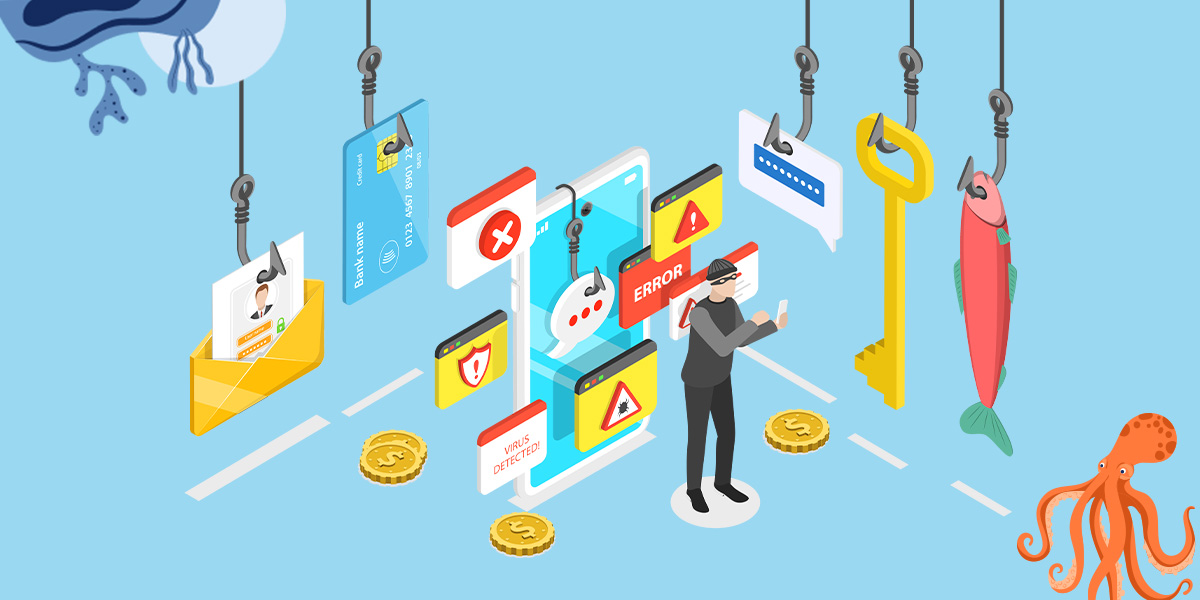


How to Recover From a Phishing Attack



Phishing attacks are scary. It's easy to fall victim to these cybercriminals as they find new and creative ways to lure targets. Companies are stepping up by improving their cyber security systems by taking measures to prepare for attacks through employee awareness and training.
It's important to understand when you're experiencing an attack and avoid panicking. We've compiled a guide on the immediate actions you should take, long-term recovery steps and tips to prevent future phishing attacks.
How Do You Identify a Phishing Attack?
Cybercriminals are constantly discovering methods to try to obtain sensitive information from unsuspecting targets. A common attempt is emailing or spear phishing. They do this through domain spoofing, which entails altering an email address or website URL to resemble the original, often looking almost identical.
The aim is to entice an individual or organization with an email that looks legitimate enough to read. Once they open the email and click on a link containing malware or a virus, the attacker may successfully gain access to their personal information.
In some cases, they could acquire banking details or other sensitive data that could compromise their identity. Attacks can be intricate. In these instances, the criminal leads the victim to provide their details under false pretenses, assuming it's a bank or financial provider.
In more direct attempts, they will install viruses or malware that is downloaded onto the victim's computer where it corrupts the system. In this ransomware scenario, the victim must pay an exorbitant amount of money to regain access to their computer system and information. This is usually targeted at large corporations with valuable client or employee information. Leaking their details can cost the company masses in lawsuits, besides the ransom they're expected to pay.
Impact of Phishing Attacks
Successful attacks often have consequences for victims of phishing, whether in a personal capacity or as part of an organization. Fortunately, you can recover from a phishing attack. The personal and organizational impact are discussed below.
Personal Impact
What happens if you have been phished? The implications may differ if you experience a personal phishing attack. Your first reaction might be to experience panic and shock. The wider impact depends on what information they managed to obtain. Some repercussions include:
- Identity theft: This is common during attacks. They might use your social security details to create new accounts and pretend to be you to commit other fraud. You'll sustain reputational damage and your credit record may be adversely affected.
- Financial loss: If the hackers somehow obtain your financial information like credit card or bank details, you could suffer grave financial losses. This can be reversed if you immediately report the theft to your bank.
- Emotional and trust issues: Suffering any of these consequences can lead to stress, anxiety and depressive feelings. Having your trust violated can make you feel guilty about falling victim or you may end up blaming yourself.
Organizational Impact
Organizations experience phishing attacks more frequently than expected. The Anti-Phishing Working Group (APWG) reported 1,286,208 phishing attacks in the second quarter of 2023. The financial sector experienced the most attacks with an accumulative wire transfer amount of $239,359 recorded in the same period.
Some implications of the organizational impact of phishing include:
- Financial loss: Companies are prone to exorbitant financial losses if they fail to protect themselves against ransomware and malware threats.
- Data breaches: Hackers can gain access to company-sensitive data and leak pertinent information on the dark web. This also has financial implications.
- Reputational damage: Failure to secure their systems with stringent cyber security measures can result in companies suffering immense reputational damage. This is amplified when lawsuits and the media are involved.
- Operational disruptions: When an attack occurs, employees tend to panic. If the attack is successful and further steps are required, it can create hype around the office and disrupt operations.
- Intellectual property loss: A company's intellectual property is at risk of being sold by criminals, often at high bids. This can lead to incomparable losses for the company if they don't recover the data.

What to Do Immediately After a Phishing Attack
It's important to know what to do after a phishing attack. Take the following steps to help deal with the aftereffects.
1. Identify and Confirm the Attack With IT
Contact your company's IT department immediately to inform them of the attack, regardless of whether the attempt was successful or not. They will advise you of the way forward and take mitigating action.
Then, disconnect your computer from the internet to prevent the malware from spreading through the network. Speak to colleagues about the attack and question whether anyone else experienced it.
2. Change Passwords
Change your password immediately. This prevents hackers from having continued access or regaining access to your computer. Ensure your password is complex and hard to decode if they attempt further attacks.
3. Inform Banks and Credit Companies
If you suspect your bank account was hacked or notice unauthorized transactions, contact your bank promptly. They will investigate the matter, advise you of the steps to take on your end and provide progress updates.
Long-Term Phishing Attack Recovery Steps
Phishing attacks sometimes serve as reminders to remain weary and vigilant, especially due to increased online fraud. Here are steps to ensure long-term attack recovery.
1. Monitor Bank and Credit Card Statements Regularly
Check your financial statements regularly and read every transaction notification text message or email you receive. Ensure you don't miss any potential unauthorized transactions, especially small amounts deducted frequently. These are aimed at going undetected.
2. Take Legal Steps
If you're concerned about identity theft and have evidence you may be a victim, consider involving law enforcement authorities. Report suspicious and fraudulent activity committed using your name. Escalate this to cyber crime units for further investigation.
3. Optimize Security
Your company will offer guidelines and training on enhancing personal security, including organizational best practices. This may include training and regular spot checks.
Future Phishing Attack Prevention
When you're mindful of phishing attacks, it becomes part of your everyday routine. You can prevent future phishing attacks by following these guidelines.
Security Education
Equip yourself to learn more about phishing, like common tactics and new trends that may emerge. Look for warning signs and carefully review suspicious emails, especially those with attachments.
Software Solutions
With the right IT training and software solutions, you'll have peace of mind knowing your computer system is protected from potential attacks. Realistic phishing simulations test your knowledge and awareness, serving to educate rather than enforce or “punish” users for opening links.
Having these measures in place adds security layers for extra protection. Specific tools identify suspicious content that may be regarded as a phishing attack. These programs usually notify users of harmful content with a warning message to prevent them from proceeding.
Continuous Vigilance
Your best defense is remaining alert when handling emails, text messages and visiting websites. Think twice when providing your credentials, clicking on email links or opening emails from unfamiliar sources. Continuous vigilance ensures protection against phishing attacks.
Partner With Phin Security for Your MSP Security Awareness Training Needs
Phin Security is your solution to phishing attack prevention. We are experts in phishing analytics to provide you with real-time data and phishing trends for yourself or your company. Our automated reporting system provides you with the insight you need, without having to continually check the status.
Our comprehensive training is effective, ensuring security and peace of mind. Contact us today and we'll get back to you to discuss your requirements.







Leave a comment: